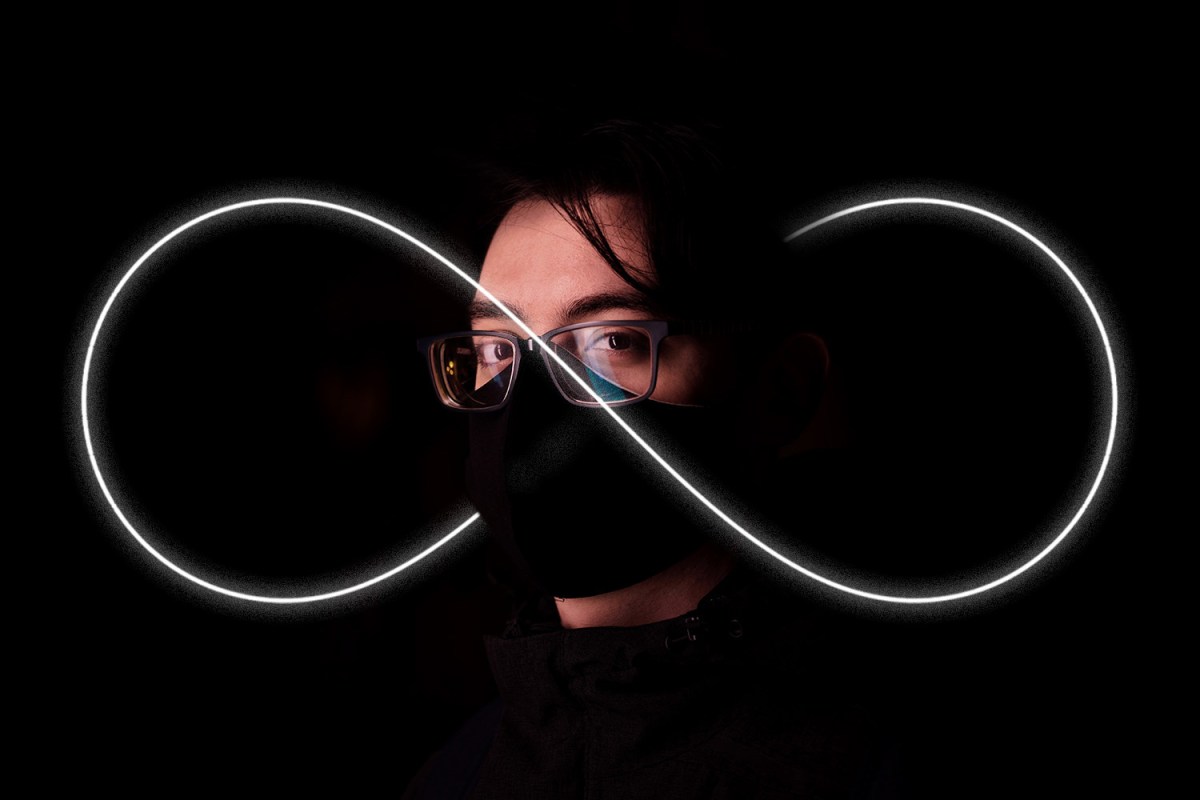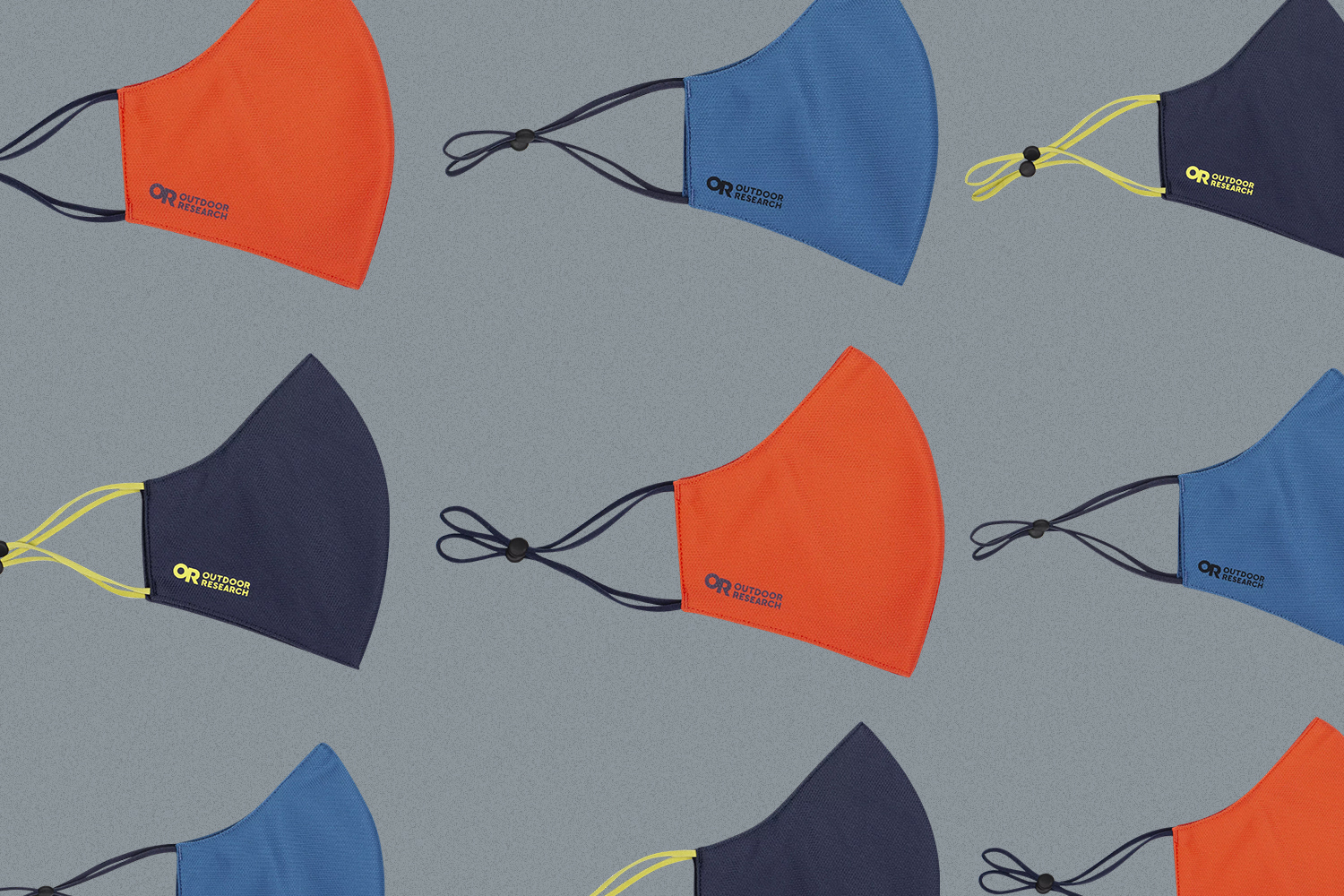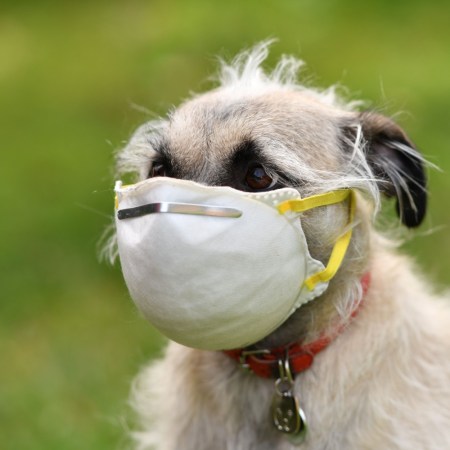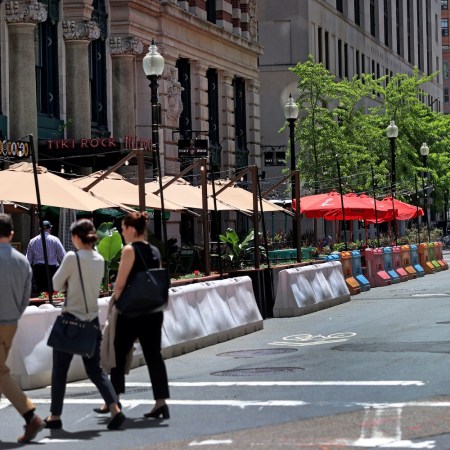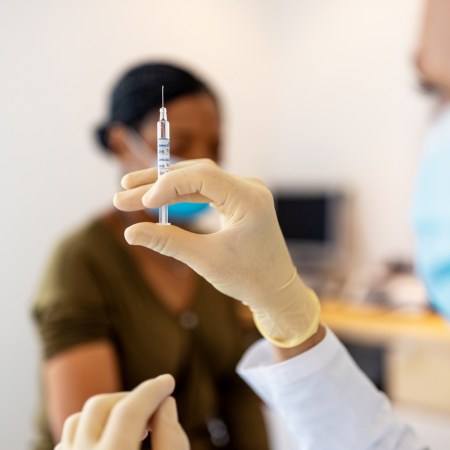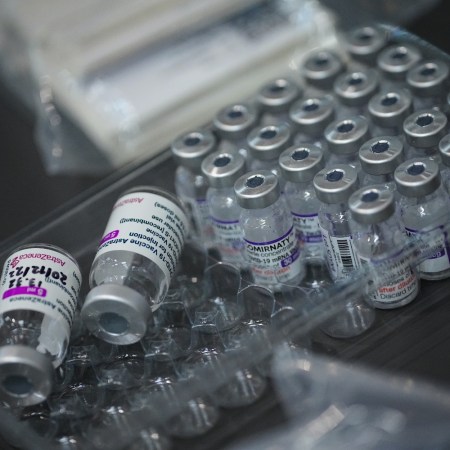I was halfway out the door last week, off to hit the grocery store, when I remembered I needed to answer an email. I sat back down to type out a reply, then got sucked into another task, and probably worked for an extra half hour. Only once I was ready to leave for real did I notice I’d never taken off my mask.
We’ve known life with face coverings since last summer, and over the last few months, the practice has started to feel somewhat automatic — it isn’t enjoyable, by any means, but at least it isn’t too annoying. We’re used to them. A colleague of mine told me that when he picks his daughters up from school, he has to remind them to take their masks off in the car.
To be clear: there also exists an uncomfortably large coalition of anti-maskers in this country — from proudly getting kicked off flights last June to protesting outside a Sephora in Beverly Hills just the other day (seriously). Plus, there are millions more Americans who sort of casually eschew mask-wearing. These people are sick of the pandemic, and as masks are the face of the pandemic, they’re sick of masks, too.
But for those of us used to wearing them, and willing to wear them in the name of public health, this moment actually offers a unique opportunity. Instead of outright banishing our masks the second we reach herd immunity, it might be prudent to hang on to them, and deploy them for purposes beyond putting a stop to COVID-19.
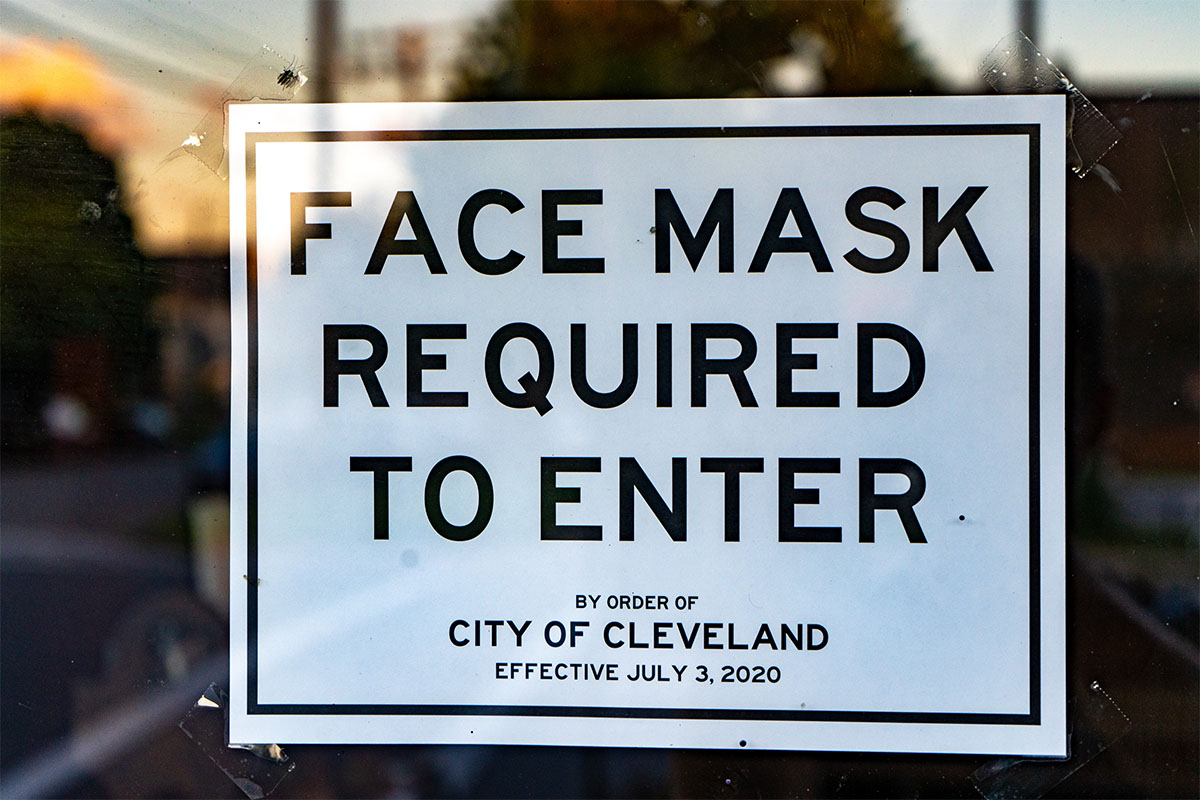
Earlier this year, a bunch of people hopped onto Twitter and pointed out that they haven’t been sick in a year. They hadn’t just dodged coronavirus, they’d completely avoided all manner of respiratory illness, including the flu and the common cold. This tracks with actual research. A study published by the University of Oxford in January found that the flu has dropped by 95% (bringing it to a level not seen in 130 years). Even amid peak flu season, Mayo Clinics in various American cities were seeing a 0.2% positivity rate against tens of thousands of flu tests.
Face coverings aren’t the only factor at play here — international borders are closed, germy grade-schoolers are remote learning and most people haven’t shaken a hand in a year — but they’re likely the X factor. According to Dr. Jay Woody, the chief medical officer of Intuitive Health and a co-founder of Legacy ER & Urgent Care, the science is actually pretty simple: “Masks reduce the transmission rate of your respiratory droplets spreading to others. When we cover our noses and mouth, we’re less likely to touch our faces or sneeze onto surfaces and transmit bacteria. This is the most common way viruses spread. People touch surfaces and leave behind traces.”
The primary aim of mask-wearing is to block projectile transmission — to protect others from our own respiratory droplets. But that Good Samaritan utility seemed to get lost in the shuffle of the early pandemic (long before there were local mandates or CDC recommendations on mask-wearing), when a lot of us assumed that walking around with a face covering on was purely for personal protection. This misconception fueled the hysteria and confusion of the time. I distinctly remember riding a New Jersey Transit train in March of 2020, seeing a couple masks and feeling irritated. For some, that blend of irritation and ignorance even morphed into very public disputes.
Of course, those early mask-wearers had the right idea. Face coverings have actually been commonplace in East Asia and Southeast Asia for decades now. Countries like China, Japan, Singapore and Taiwan have all been hit hard by past outbreaks like SARS or H1N1, but over time, masks reached ubiquity for reasons other than stopping a pandemic. Jessica Tan, an executive based in Singapore, says, “Pre-COVID, I wore a mask whenever I caught a cold. People wore masks to avoid spreading the flu to others, as well as to alert them to keep their distance.”
Japan has a similar system to Singapore, where wearing a mask while sick has long been common courtesy. In the Philippines, meanwhile, people wear masks to avoid breathing in vehicular exhaust. Shy Chinese youths apparently wear masks for an extra layer of privacy on the metro (a “social firewall”). And in Taiwan, masks are a popular option for keeping one’s face warm in the winter, which is a fringe benefit many Americans picked up on over the last few months.
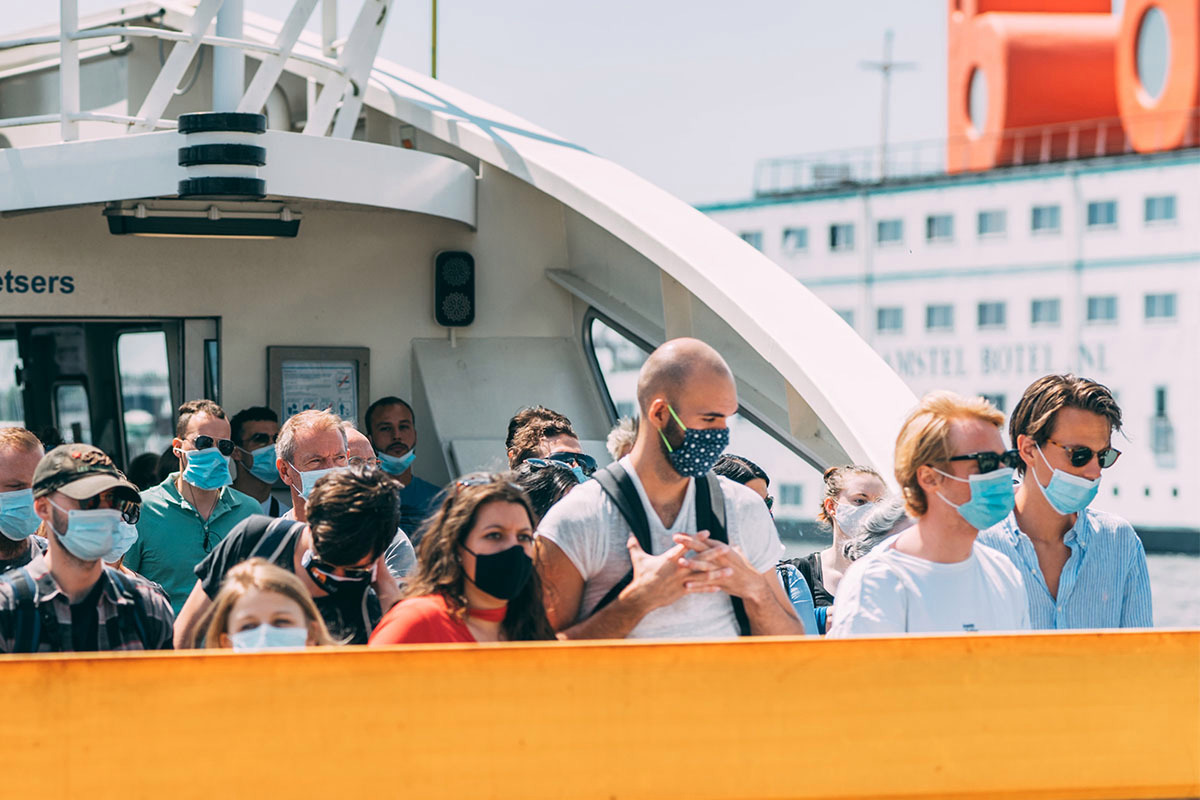
The benefit of mask use goes well beyond halting viral infections or saving teenagers from having to talk to each other — it even plays a role in Americans’ annual fight against allergens. There are nearly 20 million Americans who suffer from seasonal allergies, powering over $10 billion spent in medications and doctor’s visits. But a face covering can mitigate the hell that so many have to pay each April and May. As Dr. Natasha Bhuyan of One Medical points out: “[While] there is less research on allergies, one study found that nurses working eight- to 12-hour shifts wearing masks reported fewer allergy symptoms. The theory is that masks can also filter out allergen particles, since those tend to be larger.”
That’s mainly because the coronavirus itself is tiny. Pine tree pollen is 800 times larger than a coronavirus air droplet. Everyday masks — disposable, casual or sporty — are all designed to keep the coronavirus at bay. It tracks that defending against pollen is also well within reason. Masks can’t do much about the pesky itchiness in your eyes, but it’s likely that wearing one while walking through a park or gardening will calm down your nasal symptoms. From airborne particles to air quality, the science doesn’t really change. If you don’t want to inhale harmful pollutants — or say, wildfire smoke during the West Coast summer — masks are a good idea.
Face coverings do have some dissenters (of an actual intellectual variety, not just people marching around and appropriating quotes from the Declaration of Independence). Some have speculated that masks contribute to bad breath, and others have noticed archipelagos of acne across their chins, or worse, a rash known as perioral dermatitis. Skincare experts have confirmed that wearing a mask for much of the day is akin to having an extra flap of skin hanging on your body, which creates an inner environment ideal for microbes to fester.
Another concern, though the science is limited at the moment, is a concept known as the “hygiene hypothesis.” Simply put, we can be too clean. Research has shown that children raised in overly hygienic homes may actually be more susceptible to certain allergies down the line. Consider the boy in The Secret Garden who only starts to find his strength once he gets out of bed, once he starts rolling around in the sun and the dirt. It’s unknown how longterm mask use would affect adults in this respect, and it feels unlikely that any adult wearing a mask in a post-2021 world would actually become more susceptible to autoimmune diseases, but we can’t say for sure yet.
Probably the most legitimate concern is social. Similar to other large-scale, societal introductions like phones or cars, a simple piece of cloth could completely upend our norms and rhythms. From a behavioral psychology perspective, we don’t what it means for today’s children grow up in a world of covered faces. Or how transitioning to an adulthood with masks, after living in one firmly without, could affect social anxiety disorders. Many people have reported social regression during quarantine — they’ve forgotten how to interact with people, especially strangers. Could masks become a self-defeating social crutch?
Ultimately, it’s hard to imagine us getting to a place where mask compliance is so passionate and widespread that it’s causing issues. After all, for those who’d rather not wear them, no benefit seems to be enough — not even saving one’s life (or the lives of his friends and family) from a once-in-a-century contagion. It’s similar, Wright State University’s Dr. Leann Poston notes, to other health pitches that continually fall on uninterested ears. “You could certainly argue that wearing masks forever will decrease the spread of infections and help with allergies,” she says. “[Just] as eating only healthy foods would help prevent obesity, not smoking would decrease the incidence of lung cancer, and exercising every day would decrease the risk of heart disease.”
As the emergency-era stipulations fade away, it will be up to each person to decide when and where they want to wear a mask. Some seasons and situations seem to make a lot of sense. Say: during the height of the sick months each winter. Or whenever one boards a bus, train or plane. You’ll find your limit. Just keep in mind, someone else’s limit could easily — and very reasonably — include concerts and ballgames. Right now, the prospect of seeing masks around in 2030 sounds miserable. It’s a lousy relic from a lost year, sure. But it’s a wildly effective public health measure, too, which has your best interests in mind. Far better to be reminded of one shitty year than breathe in a half-dozen sneezes on your commute home.
Whether you’re looking to get into shape, or just get out of a funk, The Charge has got you covered. Sign up for our new wellness newsletter today.
